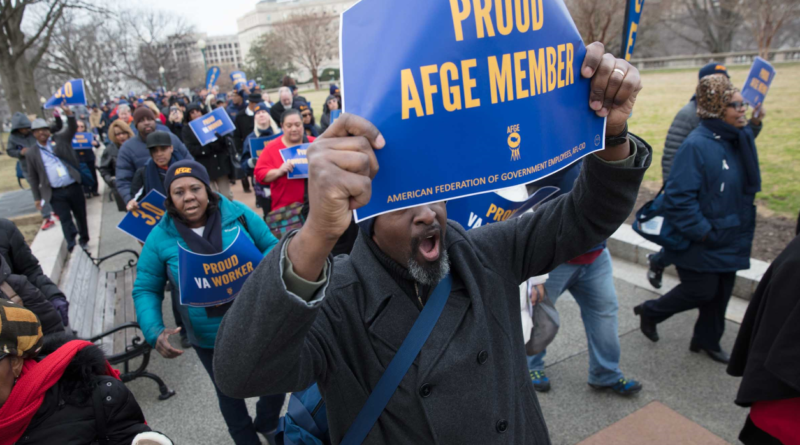The Beginning of a New Militancy Among Federal Workers?

Highlights for Jan 7th
While reports on the political implications of the current partial government shutdown continue to run on the front pages of major news outlets, less attention has been paid to the 800,000 workers who are going without a pay check. It’s been a decidedly unhappy holiday season for the roughly 400,000 furloughed workers and the approximately 400,000 essential workers forced to keep working without compensation. These workers and their union, the American Federation of Government Employees, are prohibited under federal law from striking or even from bargaining over wages. The union has opted to file a lawsuit against the government alleging that the act of forcing employees deemed essential to work without pay is a violation of the Fair Labor Standards Act. And, in the meantime, many of those workers have decided to take matters into their own hands in the form of a sickout. As it turns out, Transportation Security Officers (TSA), who get us all through airport security checkpoints on starting salaries that run as low as $25,000 to $30,000 per year, have had enough. Beginning yesterday, the TSA sickout appears to be making a real impact on wait times at airports from New York to Salt Lake City. This may be the beginning of an upsurge of greater militancy among federal workers. We include here a number of articles and a video that explore this vital aspect of the current government shutdown.
- How Federal Workers Could Fight the Shutdown/ Ben Beckett and Ryan Haney, Jacobin
- Airport Security Lines Grow Across the Nation As TSA Sickout Continues/ Grant Martin, Forbes
- Union leader discusses lawsuit against President Trump over shutdown/ The Hill
- All 20 previous government shutdowns, explained/ Dylan Matthews, Vox
How Federal Workers Could Fight the Shutdown
By Ben Beckett and Ryan Haney/ Jacobin
The federal government shut down on December 22, locking out almost 400,000 workers and forcing another 400,000 deemed “essential” to show up to work without pay. Many of these workers are union members, affiliated with the American Federal Government Employees (AFGE). The union is rightfully suing the federal government, claiming that it is illegal to require workers to work without paying them. But a more militant labor movement could respond to the shutdown very differently, seizing the “choke points” within the US economy and society that federal workers are strategically positioned to take advantage of.
Read the full report here.
Airport Security Lines Grow Across the Nation as TSA Sickout Continues
By Grant Martin/ Forbes
Security lines at airports across the country are starting grow long as nationwide action from Transportation Security Agency (TSA) workers starts to take its toll. On Friday, CNN reported that the agency, which is responsible for operating security checkpoints at airports across the country, was suffering from staffing shortages as a function of the government shutdown. According to the report, TSA agents have been calling in sick in record numbers during the shutdown in protest of withheld pay. Frontline staff at the agency have worked without pay since the shutdown began, though they expect to be paid in full after the government resumes operations.
Read the full article here.
Union Leaders discusses lawsuit against President Trump over shutdown
By The Hill
The underlying principle is the provisions of the Fair Labor Standards Act which requires an employer to pay workers when they perform work. It’s pretty simple…That’s the law that includes the minimum wage and the minimum wage isn’t zero which is the way the government is currently acting. It’s requiring more than half of the people who are affected by the shutdown to come to work, often work overtime and without any guarantee of pay, so it’s a violation of even a minimum wage.
Watch the full video here.
All 20 previous government shutdowns, explained
By Dylan Matthews/ Vox
We are currently in the middle of the third longest-running government shutdown in American history. With 16 full days down, and no clear end in sight, the odds are good that the 2018-’19 shutdown will outlast 2013’s (also 16 days) or even 1995’s (21 days) by the time it’s done. The partial shutdown began on December 22, 2018, with President Donald Trump’s demand for $5 billion to pay for his much-promised full-length border wall with Mexico, and while both parties in Congress had floated $1.6 billion as a compromise, Trump rejected it. His $5 billion isn’t enough for a full wall, but would block off 215 additional miles that are currently unfenced (in addition to the 120 miles the administration is currently building with existing funds). Most recently Democrats offered a spending package that would maintain current funding levels for border security, which Trump rejected out of hand.
Read the full article here.



